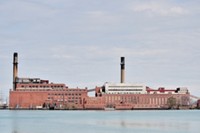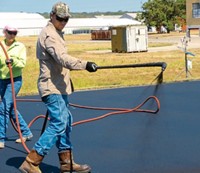Advertisement
Grab your lab coat. Let's get started
Welcome!
Welcome!
Create an account below to get 6 C&EN articles per month, receive newsletters and more - all free.
It seems this is your first time logging in online. Please enter the following information to continue.
As an ACS member you automatically get access to this site. All we need is few more details to create your reading experience.
Not you? Sign in with a different account.
Not you? Sign in with a different account.
ERROR 1
ERROR 1
ERROR 2
ERROR 2
ERROR 2
ERROR 2
ERROR 2
Password and Confirm password must match.
If you have an ACS member number, please enter it here so we can link this account to your membership. (optional)
ERROR 2
ACS values your privacy. By submitting your information, you are gaining access to C&EN and subscribing to our weekly newsletter. We use the information you provide to make your reading experience better, and we will never sell your data to third party members.
Environment
Sealants Are Source Of Lake Pollution
by Cheryl Hogue
December 13, 2010
| A version of this story appeared in
Volume 88, Issue 50

Coal-tar-based pavement sealants are the largest source of polyaromatic hydrocarbon (PAH) pollution in many urban lakes, according to newly published research by U.S. Geological Survey scientists. The National Toxicology Program classifies eight PAHs found in coal tar as “reasonably anticipated to be human carcinogens.” They are also toxic to aquatic organisms. In the study, published in Science of the Total Environment, USGS scientists analyzed sediment cores from 40 U.S. lakes, then determined the sources of PAHs (DOI: 10.1016/j.scitot env.2010.08.014). Coal-tar-based sealants contributed about half of PAHs in the lakes on average, the researchers found. Another quarter came from spilled motor oil and particles worn from tires. In addition, the study reported that levels of PAHs were significantly higher in lakes of the eastern and central U.S., where coal-tar-based sealants predominate the market.





Join the conversation
Contact the reporter
Submit a Letter to the Editor for publication
Engage with us on Twitter